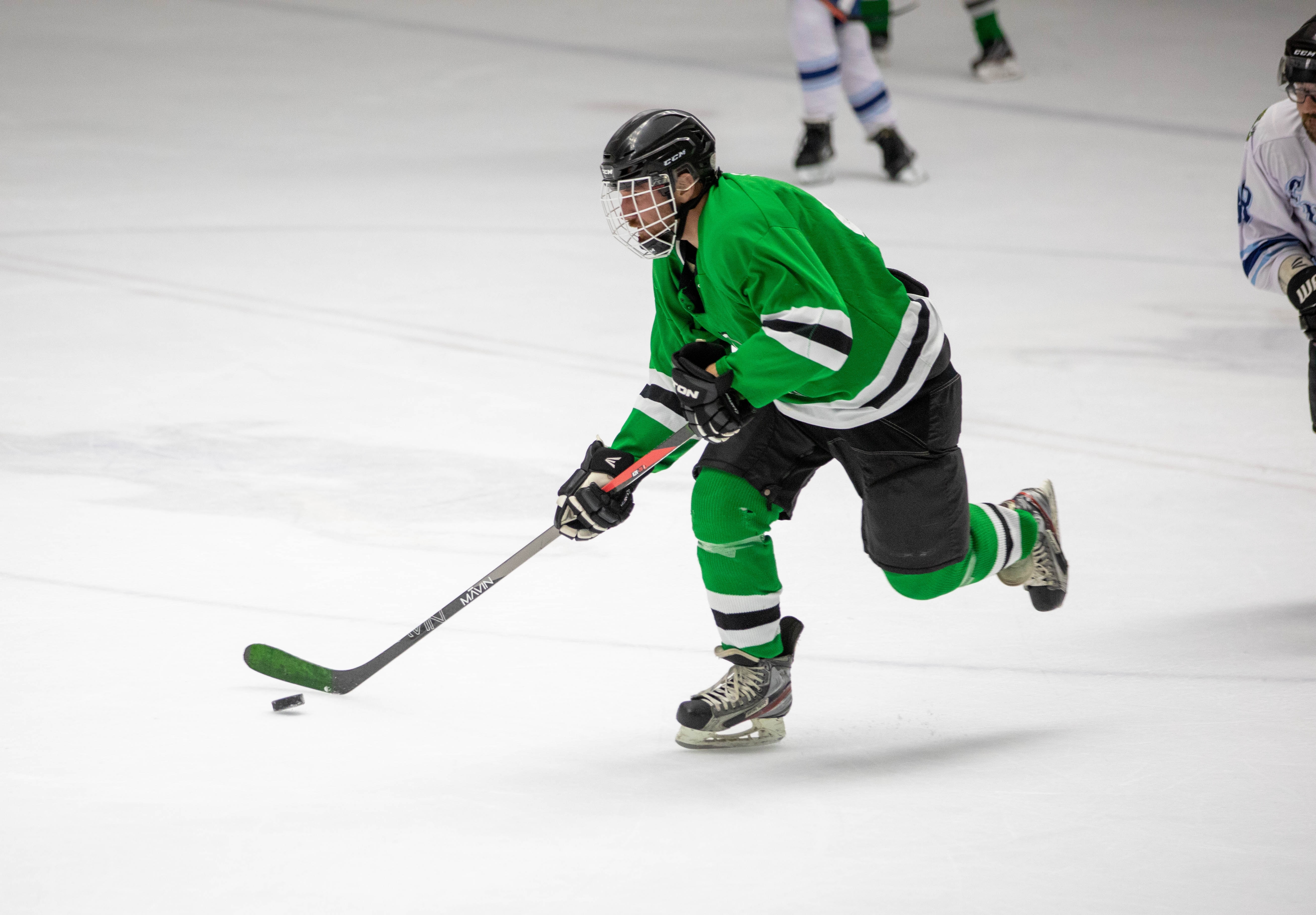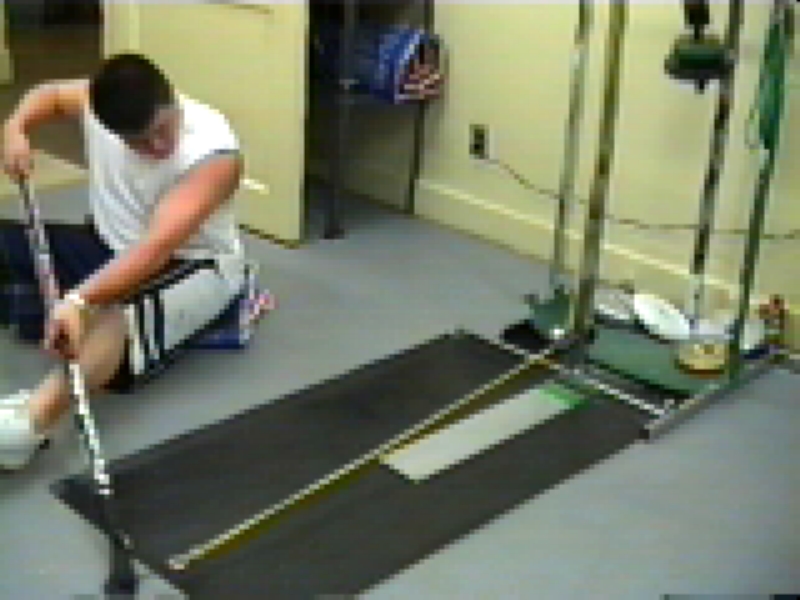Moving From A Vacuum To The Hockey Game
While this one originated with a question from a long time high school hockey coach, my answer probably isn’t going to exactly get too much into what he expects. Oh, it’ll be good stuff for him, but I’m going to go a little bit beyond what he’s asking in order to really help his player and my faithful members.
Let me start by pasting in part of the email from that coach…
“Dennis. For the first time in my coaching career I am stumped. I coach high school hockey and usually by this age I don’t have to teach a kid how to shoot. This kid has all the skills except how to shoot. His release is really slow. I also believe everybody shoots differently because everybody’s bodies and skill form are different. My question for you is other then the advise I gave him for the off season is there any thing you would add to this… 100-200 shots in the driveway everyday practicing foot and body positioning. I also told him to go onto youtube and look up shooting technique. I also told him not to worry to much on accuracy yet. just focus on release point first and accuracy will come later.”

Actually, I’d have given that boy close to the same advice his coach offered him…
Like so many other things in our game, shooting is a “movement” that has to be learned by the player’s body and mind and the signalling mechanisms in between. And, the best way to learn a movement is to just do it and do it and do it, over and over again — and frequently. So, the coach’s advice to the boy about shooting lots everyday in the driveway (or wherever) is well founded.
The coach is also somewhat right about each player using at least a slightly different technique in given movements, this having to do with each different body type. I wouldn’t say that technique differs much from player to player, though, which means that advice from some quality YouTube.com videos should be helpful.
The coach’s third suggestion — about not worrying too much about accuracy — is probably a good one, too, and something I actually wouldn’t have even thought about. His point, obviously, is to have the kid just shoot and shoot and shoot, and to worry about other stuff a little later, when the movement becomes more natural.
The coach described his kid as a 15-year old junior varsity member, which gives him time to develop a little more before moving up to the big team. The boy isn’t too big, either — at least for now, at about 115-pounds.

Okay, about that “vacuum” thing…
For the time being, we’re not worrying about the kid shooting under game-type conditions. Instead, he’s going to work on his own most of the time, and far away from competition. So, while some might describe conditions that way — or as if he’s working in a laboratory, I quite often refer to it as being in a vacuum, for a reason I’ll explain a little later.
What is that coach asking of this old coach? Well, I guess he might be wondering how I’d handle the teaching, and perhaps which shooting mechanics I’d tend to concentrate on most.
So, Number One, I’ll suggest something members will notice me mentioning quite a bit when it comes to skills, in that the boy might take five or six successive shots, and then rest before taking the next batch. The reason for successive shots is that a player needs to perform a movement, assess it — or see what it feels like and whether it seemed right or not, and then take another with more corrections. Doing five or six of those usually helps, while doing too many is going to tire him, both physically and mentally. And, by mentally, I mean that he is not going to focus as much on each shot, and perform the kind of self examination I just described.
Secondly, I have had my players practice shooting movements with and without a puck. Shooting with a puck is nothing new to readers, but the idea of practicing without one forces the player to focus solely on the movement. I’ve used this plenty in refining the slapshot, as well as the sweepshot. In taking the slapshot, for example, the player in question could stand in place, relax a bit, and rock into an imaginary puck. This is good for movement, as far as I’m concerned, because the puck isn’t there as a distraction.
As for technique, about the only thing I might suggest differently than other coaches is for the slapshot movement to be done rather easily. In other words, instead of trying to kill the puck, a player’s movement into it has a whole lot more influence on the resulting take-off of the shot. Said yet another way, coordination into the puck — or “getting it all” — seems to produce some pretty good shots. That’s why many smaller pros can fire rockets, while some big, lumbering guys don’t shoot all that well. Anyway, the idea of relaxing and rocking easily into the puck tends to really help a player’s movement.
Okay, most of the above takes place in that proverbial vacuum. It’s a good place to learn and then perfect a given movement, but it’s far from the conditions a player faces when in the game action. Out there, one can’t stand prettily to shoot, or measure his or her movement, like a golfer readying to tee-off. No, opponents — if they’re not trying to kill you, are at least trying to knock you off the puck and deflect you away from their net.
Reflecting back on my High School Prep and Junior HS Teams back in Massachusetts, I realize now more than ever that I helped those guys immensely by ultimately training them for real game action. Consequently, the drills they did once their movements were down pat had them able to pull the trigger with opponents draped all over them. All of my kids could fire in off-balanced positions, and the best of them could score goals with only one hand on their stick (and not only with their strongest hand).
Within my various videos on shooting or off-ice training, I’ve shown members a number of homemade devices that helped build some serious strength in my players’ shooting.

Easier to describe here, I’ll mention that my kids eventually spent lots of time shooting off one skate and then the other, and shooting while seated, from two knees or from one or the other.
The above just made me think of another distinction between the vacuum and real game conditions, in that most coaches make a big deal out of their students or players shooting off the “right foot” (meaning the correct foot). That’s fine for learning the basic movement, or for working in the proverbial vacuum. The interesting thing is, some of the top scorers in the world pull the trigger while on their so-called “wrong foot”, because goaltenders just aren’t ready for that. (Interestingly, at least two of the so-called hockey gurus many of you follow haven’t quite figured this out yet.)

That kind of thinking had me teaching my guys to shoot while jogging or while hopping on two feet or one foot at a time. If members can envision most of the exercises I’ve described to this point, you might realize that I’ve pretty much taken away my players’ whole body movements. In other words, they have to find a way to send the puck on-net without being able to use their lower bodies, or without being able to dig-in.
In the end, my coaching friend complained a little bit about the sticks his kids are now using, and how much they — the synthetics — differ from the wooden ones he grew up with. I agreed with him, in a way, but then I suggested that conditions today are what they are. Kids are going to use the fancier, lighter ones, and I think we just have to understand that.
In closing, I’m hoping that members will have questions. I sense I haven’t answered everything to everyone’s liking. So, please leave a comment below, and I’ll do my best to answer.